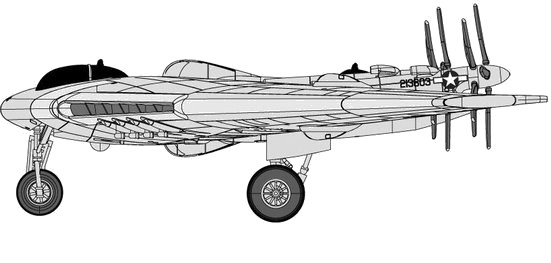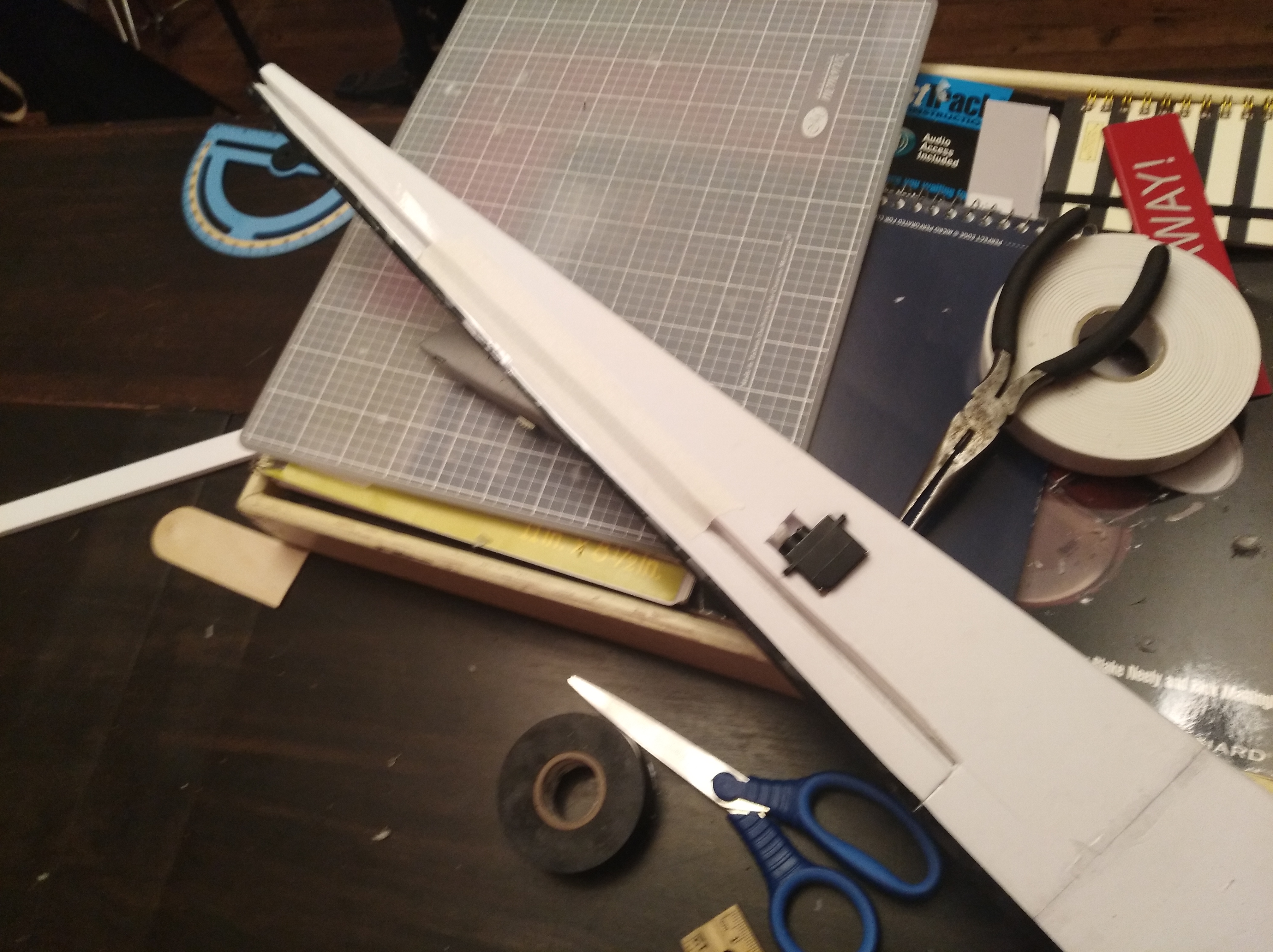Crawford Bros. Aeroplanes
Legendary member
I learned recently from @FoamyDM about a NASA test project called PRANDTL-D. He built his own version of the prototype and posted plans here: https://forum.flitetest.com/index.php?threads/prandtl-d-foam-board-wing-by-foamydm.58170/
This morning I began building my own wing from @FoamyDM 's plans. I have both wings finished and will probably finish the airframe tomorrow. I plan on powering mine and using elevons, we'll see if I can make a system that fits and isn't too heavy.


The Prandtl wing concept is designed to produce proverse yaw, this makes true taillesss aircraft possible without the need for split flaps or vertical stabilizers. To induce proverse yaw the wingtip is twisted forward, this generates thrust during banks and rolls and yaws the plane into a roll while keeping the plane stable in level flight. This is achieved through non-uniform twist throughout the wing.

On a Prandtl wing, the wingtip it twisted forward at a much shallower angle of attack than the rest of the wing. This coupled with dihedral generates induced thrust, resulting in proverse yaw. This is a simplified explanation, NASA's experiment report goes into further detail:
http://www.amaflightschool.org/sites/default/files/219072.pdf
PRANDTL-D glider project:
https://www.nasa.gov/centers/armstrong/news/FactSheets/FS-106-AFRC.html
I was out of Dollar Tree Foam Board when I began this project, but my brother had some Ross foam board that I decided to try. It has notable pros and cons over DTFB, for one it's more of a packing foam and less of a styrofoam. his means it's more flexible without removing the paper, and it tends to crumple rather than rip like DTFB. However, the paper backing can be peeled off DTFB to make it flexible. This is impossible with RFB, so shallow curves are stronger with the paper intact but moulding complex shapes is impossible. Because of this my Prandtl wing is incredibly rigid. In the future I may try using both RFB and DTFB for different parts of the same build, based on the strengths of each type of board.
This morning I began building my own wing from @FoamyDM 's plans. I have both wings finished and will probably finish the airframe tomorrow. I plan on powering mine and using elevons, we'll see if I can make a system that fits and isn't too heavy.


The Prandtl wing concept is designed to produce proverse yaw, this makes true taillesss aircraft possible without the need for split flaps or vertical stabilizers. To induce proverse yaw the wingtip is twisted forward, this generates thrust during banks and rolls and yaws the plane into a roll while keeping the plane stable in level flight. This is achieved through non-uniform twist throughout the wing.

On a Prandtl wing, the wingtip it twisted forward at a much shallower angle of attack than the rest of the wing. This coupled with dihedral generates induced thrust, resulting in proverse yaw. This is a simplified explanation, NASA's experiment report goes into further detail:
http://www.amaflightschool.org/sites/default/files/219072.pdf
PRANDTL-D glider project:
https://www.nasa.gov/centers/armstrong/news/FactSheets/FS-106-AFRC.html
I was out of Dollar Tree Foam Board when I began this project, but my brother had some Ross foam board that I decided to try. It has notable pros and cons over DTFB, for one it's more of a packing foam and less of a styrofoam. his means it's more flexible without removing the paper, and it tends to crumple rather than rip like DTFB. However, the paper backing can be peeled off DTFB to make it flexible. This is impossible with RFB, so shallow curves are stronger with the paper intact but moulding complex shapes is impossible. Because of this my Prandtl wing is incredibly rigid. In the future I may try using both RFB and DTFB for different parts of the same build, based on the strengths of each type of board.
Attachments
Last edited:








